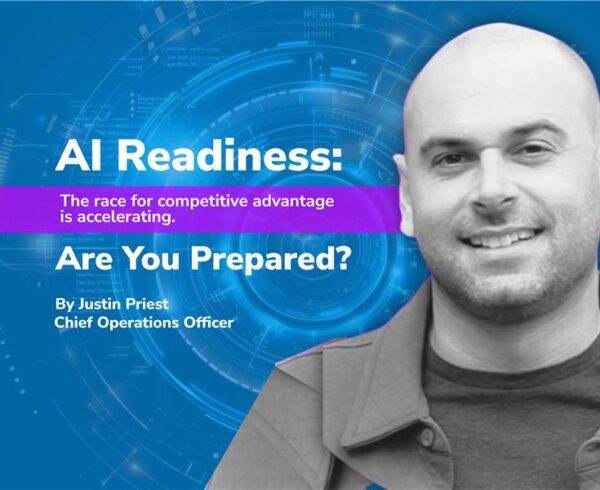AI is rewriting the rules of business. Every industry is talking about the tools, platforms, and algorithms that will transform their future. But here’s what I see as a recruiting leader on the frontlines: the real competitive advantage doesn’t come from the tech itself, but from the people who know how to wield it. Without the right talent, even the most advanced systems sit idle.
This is why the conversation about AI should be inseparable from the conversation about reskilling. Organizations cannot simply hire their way out of disruption. They have to build new capabilities within their existing teams and they have to do it now.
Why reskilling is urgent
The numbers paint a sobering picture. McKinsey estimates that by 2030, as many as one in ten U.S. workers may need to switch occupations entirely due to automation and shifting demand. Meanwhile, the World Economic Forum projects that 39% of core skills will change by the end of this decade, with creativity, critical thinking, and resilience emerging as top priorities alongside technical literacy.
That means the workforce of today is not the workforce we’ll need tomorrow. And it isn’t just coders or data scientists who need to retool. Every department, from HR and operations to marketing and finance, must adapt to new ways of working.
Beyond technical skills
One of the biggest misconceptions I encounter is that reskilling equals technical training. Certainly, proficiency in AI tools, data platforms, and emerging software is important. But the companies that are thriving right now are the ones that recognize the equal importance of human-centric skills.
Why? Because technology doesn’t replace judgment, empathy, or collaboration. It augments them. A marketer who can analyze campaign data is valuable, but a marketer who can also interpret that data, tell a compelling story, and rally stakeholders around a vision is irreplaceable. A project manager who understands automation workflows is useful, but a project manager who can navigate conflict, adapt under pressure, and inspire a team through change is essential.
Reskilling, then, must be holistic. It must give employees the technical fluency to keep pace with innovation and the human skills to lead, create, and connect in a world shaped by that innovation.
What I see in the market
In my role I have a vantage point into both sides of the equation: the employers searching for talent and the professionals navigating career pivots. What stands out is the gap between companies that treat training as an event and those that embed it into culture.
Too often, reskilling is reduced to a checkbox as a two-day workshop or an optional online course. Employees return to their regular workloads, and nothing really changes. The companies that differentiate themselves take a different approach. They create continuous learning environments: stretch projects that push employees into new territory, cross-department collaboration that exposes people to different ways of thinking, and leaders who model curiosity by learning alongside their teams.
In fact, research shows that while 71% of employees report satisfaction with their upskilling programs, 80% want companies to invest even more. This confirms what I hear in conversations daily—people want to grow, and they’re more likely to stay with organizations that invest in their growth.
What companies should do differently
The truth is that most organizations are still approaching reskilling too narrowly. They wait until a new system is launched to train people. They view upskilling as a cost center rather than a growth driver. And they overlook the need to align technical fluency with human skills.
Here’s what needs to change:
-
- Make learning visible. Leaders must not just approve training budgets, but personally champion and participate in learning programs. When executives treat reskilling as critical to strategy, it sends a clear signal that everyone should follow.
-
- Blend technical and human skills. Train employees in AI tools and analytics, but equally emphasize adaptability, creativity, and communication. The blend is what enables true innovation.
-
- Prioritize cross-functional learning. Give employees opportunities to step outside their silos, shadow other teams, or rotate through projects. This builds both empathy and agility.
-
- Measure outcomes. Link reskilling to performance metrics, career advancement, and retention. Employees should feel that learning moves them forward, not sideways.
Building resilience through people
Reskilling isn’t just about keeping pace with technology—it’s about building resilience. It’s how organizations ensure that when the next disruption arrives, they have a workforce ready to adapt instead of scramble. It’s how individuals future-proof their careers in a world where yesterday’s expertise can quickly become outdated.
The companies winning right now aren’t the ones with the flashiest platforms. They’re the ones cultivating adaptable, curious, and multi-skilled teams. They’re creating cultures where learning is celebrated, risks are encouraged, and talent feels empowered to evolve.
The Great Re-Skilling is already underway. The question isn’t whether organizations will join it, it’s whether they’ll do so in time to keep their people, their culture, and their business competitive.






